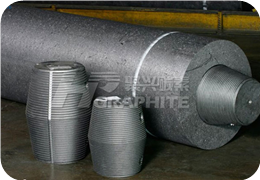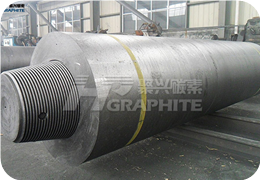CRU: China's carbon price is expected to rise to 650-2000 yuan/ton in next 10 years

CRU: China's carbon price is expected to rise from current 50 yuan/ton to 650-2000 yuan/ton in next 10 years to achieve emission reduction
In this industry insight, we focus on the progress made so far by China's new carbon emission trading system and explore its future development potential. The information of high quality graphite electrode for EAF steelmaking. By comparing it with Europe's Emissions Trading System (ETS), we explore what level the carbon price needs to reach in order to affect the investment decisions of China's power and steel industries.
The number of deals and prices so far have been relatively low
On the first trading day of the national carbon trading market, 4.1 million tons of carbon emission quota was traded, equivalent to about 33% of the total annual carbon emission of China's power industry. The total turnover was 210 million yuan (approximately US $32 million), and the average price was 50 yuan/ton (approximately US $8/ton), which was higher than about 40 yuan/ton (approximately US $6/ton) during the regional pilot period in the past two years. The average price is much lower than the current price of ETS in the EU.
China's carbon market is more likely to follow the path of the EU ETS
Compared with domestic regional pilot projects, EU ETS may provide better guidance for the future development of China's carbon market. Geographically, EU ETS covers the whole European continent and involves huge carbon emissions. EU ETS began in 2005 and has gone through various implementation stages.
There are signs that China may follow a similar path. In future, quotas will need to set absolute emission levels to effectively drive CO2 reductions.
From 2022, free quotas are likely to be reduced and stricter emission benchmarks will be introduced.
In addition, more fine-tuning policies will be introduced, including increasing penalties for violations. From 2025, the system may also introduce absolute caps and then further reduce emission quotas, all of which will gradually push up the carbon price over a period of time.


China's carbon price could be on a par with the EU's
The cost and effectiveness of carbon emission trading system ultimately depend on the market price of carbon dioxide, which is closely related to policy decisions on carbon market regulations, such as initial quota pricing, carbon emission caps, carbon leakage prevention and industry coverage.
Opinions on the future price of carbon are divided. The average carbon price will rise to 93 yuan/ton (about us $14/ton) in 2030 and 167 yuan/ton (about US $26/ton) in 2050, according to the China Carbon Forum's carbon pricing survey in 2020. CRU's research suggests that such a price is not enough to have any real impact on decarbonisation.
At present, the carbon price of ETS in EU is much higher than that in China. However, with the gradual introduction of the above regulations, China's carbon price could gradually catch up with that of the EU. Given the huge share of these two regions in the total global carbon emissions, it is ideal for the two regions to maintain a balance in order to prevent carbon leakage, although there is a general price difference between them. The EU's carbon boundary adjustment mechanism (CBAM), to be introduced from 2023 and fully implemented by 2026, could also accelerate the process.
It will take some time for these phases to be fully implemented. China's emissions trading system is about eight years behind the EU's, but with aggressive decarbonisation policies likely to be adopted in the current five-year plan, full implementation may not take five years.
China's carbon price must rise sharply to encourage enterprises to make changes
Low carbon prices will not reduce emissions and dependence on fossil fuels, nor can they promote the use of clean energy. Therefore, it is necessary to consider what prices can affect investment decisions to achieve China's decarbonization goal. The answer is complicated because there is not one carbon price that affects the costs of different industries and incentivizes them to invest in reducing emissions, but a series of them. In the European Union, for example, CRU estimates that the carbon price in the power sector may need to rise to about 650-780 yuan yuan/ton (about US $100-120/ton) to encourage enterprises to replace coal-fired or gas-fired power generation with solar energy, including the cost of battery storage technology used to cover based-load power generation.
For the EU steel industry, we estimate that the carbon price may have to rise to at least 2000 yuan/ton (about US $300/ton) to encourage it to switch to hydrogen technology. Electricity and steel prices may have to rise as a result. The emission reduction measures of each industry include different hierarchical structures, involving different carbon prices, ranging from the simpler option of using current technologies (e.g., renewable energy) to the more difficult use of new technologies (e.g., hydrogen to make steel). It is also worth noting that China may be able to establish carbon emission reduction technologies at a lower cost than the west, so China may apply a lower carbon price than the West.
To reduce more carbon dioxide emissions, we need to implement a higher carbon price. China's current carbon price of 50 yuan/ton or the EU's carbon price of about 400 yuan/ton is not enough to bring the required changes in the long run. If we want to achieve the goal of decarbonization through the market-based price mechanism, it is more reasonable for the long-term carbon price to reach 650-2000 yuan/ton (about US $100-300/ton).
All industries should make plans for rising carbon prices before the middle of this decade
We expect that the new system will produce the first major change in the middle of this decade. At that time, China's carbon emission trading system is expected to become one of the most important driving forces to change the global carbon emission pattern. These changes will raise the carbon price and have an increasingly important impact on the cost, investment, price and demand decisions of many industries. In short, in the next decade, we will achieve In terms of emission reduction effect, we expect that China's carbon price will rise from the current 50 yuan/ton (about US $8/ton) to 650-2000 yuan/ton (about US $100-300/ton), to get the carbon market news from us.
No related results found








0 Replies